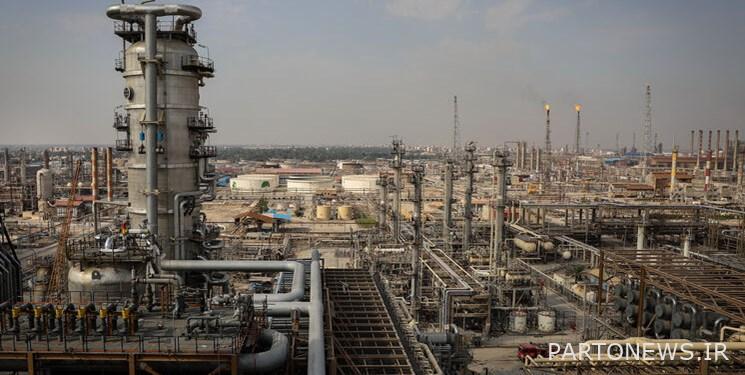Details of the country’s refining superproject in Abadan Refinery

Jalil Salari in an interview with the economic reporter of Fars news agency, referring to the operation of phase 2 of the Abadan Refinery development and stabilization plan, said: This plan was put into operation by the president today, which was a big event in the refining industry of the country and the Middle East. In this plan, a new refining unit of 210,000 barrels has been replaced, and practically the condition has been created that 25% of the country’s crude oil (equivalent to 1.8 million barrels per day) will be refined in this unit.
He stated: By using this project, it is possible to refine 500,000 barrels of oil in the Abadan refinery, which can be used by renovating and putting the old unit into service in critical and special times and the country’s need for fuel.
Salari said: If this plan was not put into operation, due to environmental and safety considerations, the capacity of the Abadan refinery would decrease to 150,000 barrels per day in the coming years.
The CEO of the National Refining and Broadcasting Company said: The efficiency of Abadan refinery units was around 30-40% and they were very old and had a lot of energy loss. But now the largest distillation units in the country have been created with 210 thousand barrels.
He said: In this plan, attention has also been paid to downstream issues, that is, in this plan, the quality of products will be increased, gasoline and diesel production will be increased, and fuel oil production will be reduced.
* Unique features of Abadan Refinery
Salari continued: Abadan refinery is the only refinery that supplies both Abadan petrochemical gas feed and liquid feed (25 thousand barrels of naphtha) to Bandar Imam Petrochemical. With the implementation of this plan, the supply of feed for petrochemicals, feed for bitumen and oil production units in nearby areas will be stabilized.
The CEO of National Refining and Distribution Company said: With the use of this plan, fuel oil production will decrease from 45% to 26%, and in return, lighter products will be produced. In this phase, about 4 to 5 million liters of naphtha are added to the production of the refinery every day, which is then converted into gasoline. In this way, gasoline production will reach from 10 to 15 million liters per day.
He emphasized: Also, in this plan, diesel production will increase from about 16 million liters to 22 million liters per day. With the implementation of the supplementary phase 2 of the plan, the quality of these products will be done, which will enter the service step by step.
Salari explained: Both light crude oil and heavy crude oil can be processed in the Abadan refinery. In this refinery, the model and pattern of refining is defined in two parts, which includes the maximum production of gasoline and the maximum production of diesel.
The CEO of the National Refining and Broadcasting Company said: It means that we may want to move towards light diesel base cars in the country, so all refining patterns should not be towards gasoline. Also, there is more demand for diesel imports in the market. As a result, Abadan refinery is the second refinery after Arak refinery that has both a hydrocracker unit and a catcracker, and it is placed in two modes of gasoline and diesel production.
end of message/
You can edit this article
Suggest this article for the first page

